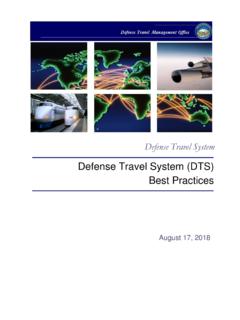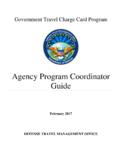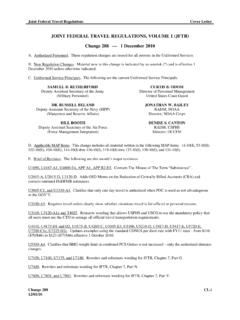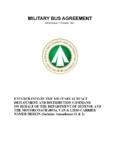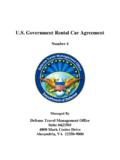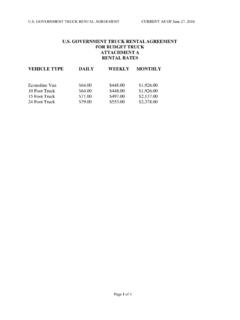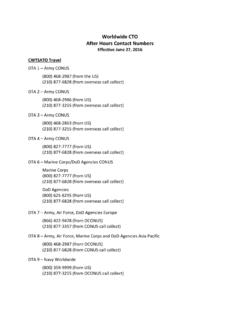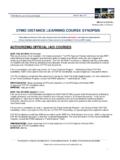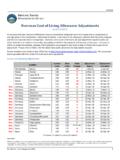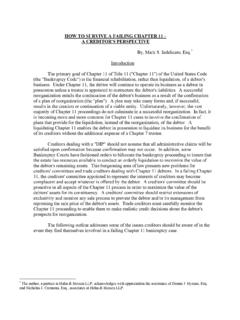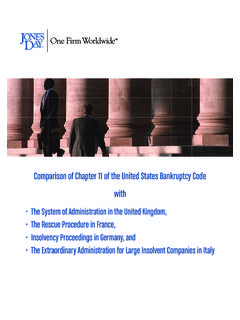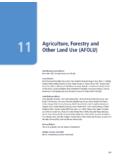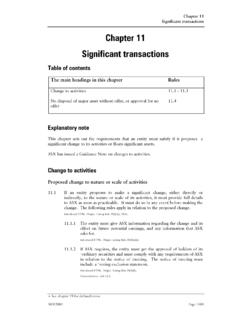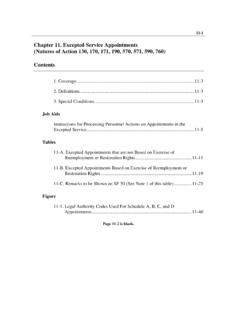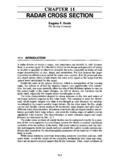Transcription of Chapter 11: Special Circumstances Travel
1 DTS Release , Document Processing Manual, Version , Updated 11/3/10 Page 11-1 This document is controlled and maintained on the Web site. Printed copies may be check revision currency on the Web prior to 11: Special Circumstances TravelSome types of Travel and their applicable entitlements are identified in the Joint Federal Travel Regula-tions/Joint Travel Regulations (JFTR/JTR) as Travel Under Special Circumstances or Categories. These are also known as Special Circumstances Travel (SCT). This Chapter identifies the trip types that are included in SCT. It provides guidance for creating an authori-zation in the Defense Travel System (DTS) using any of the SCT trip types. This Chapter assumes the user is familiar with authorization creation procedures in DTS. The information provided here only shows the ways in which the SCT trip types change the process for creating authorizations. For more information on creating an authorization in DTS, see Chapter 2 of this manual.
2 Check local business rules to ensure that all substantiating documents are attached and Travel is done in accordance with the requirements of the traveler's organization. This Chapter covers the SCT Secondary Trip Travel Authorization Process for Special Circumstances Selecting a Trip Information Only Trip Types .. Preview Trip Dependent Alternate Location Transportation Only Trip Per Diem Only Per Diem Only On Travel TDRL Actual Cadets and Congressional Blocked Scheduled Partial Blocked Limited Terminal Excess Baggage Review and Approval of SCT 11: Special Circumstances TravelPage 11-2 DTS Release , Document Processing Manual, Version , Updated 11/3/10 This document is controlled and maintained on the Web site. Printed copies may be check revision currency on the Web prior to SCT Secondary Trip Types The SCT secondary trip types facilitate the reporting of certain Travel that was not previously allowed by the JFTR/JTR.
3 Eligibility for routine Travel is typically determined by the Authorizing Official (AO), whereas eli-gibility for SCT is determined by personnel, medical or other authorities. Conditional routing for SCT may be used to route documents to the appropriate approving authority. Each trip type includes a printable information page to ensure that the traveler and AO are aware of the Special Circumstances for the trip. Many SCT secondary trip types will trigger Other Authorizations. The Other Authorizations cannot be removed manually. They can only be removed when the triggering condition is no longer present. The Other Authorizations remarks are not editable but may be appended. Some of the SCT trip types use DTS functionality for Travel , transportation, and per diem to record fully reimbursable Travel . The below list identifies examples of Travel for which these trip types are available: Family Member Travel Patient Travel Escort and Attendant Travel Interview Travel Travel When Recalled From Leave or When a Ship Has RelocatedSee Table 11-2 for a list of these trip types and their use.
4 Some of the trip types have regulatory restrictions on reimbursement for transportation and/or per diem. In accordance with existing regulations, DTS enforces required restrictions on allowable per diem, transpor-tation expense reimbursement, use of military air, and Travel to alternate locations. These Travel situations are listed below: Emergency Leave Rest and Recuperation (R&R)/ Special R&R Leave Emergency Visitation Travel (EVT) Family Visitation Travel (FVT) Funded Environmental and Morale Leave (FEML) Convalescent Leave Military Dependent School Travel Outside Continental United States (OCONUS) Department of Defense Education Activity (DoDEA) Student Travel Disciplinary TravelSee Table 11-3 for a list of these trip types and their use. In addition to the preceding SCT trip types, some trip types provide information only on common Travel . These trip types are typically accomplished using Routine, Invitational, or Permissive Travel capabilities in DTS.
5 See Table 11-4 for a list of these trip types and their use. The Secondary Selection drop-down list on the Trip Overview screen displays only the secondary trip types that the traveler is eligible to use, based on the traveler's profile. For instance, LABOR ORG REPRE-SENTATIVE does not appear for military members. Likewise, AMATEUR SPORTS COMP does not appear for civilian employees. CADET-MIDSHIPMEN will only appear for military members with a rank of MC-00. Note: If directed to Travel using military aircraft, contact the local administrative representative for instruc-tions on acquiring a reservation and seat on available military aircraft. Chapter 11: Special Circumstances TravelDTS Release , Document Processing Manual, Version , Updated 11/3/10 Page 11-3 This document is controlled and maintained on the Web site. Printed copies may be check revision currency on the Web prior to 11-1 provides definitions for the terms used in this 11-1: DEFINITIONSDEFINITIONSTERMDEFINITIONA ttendantA member, employee or other person who accompanies a member or employee authorized to Travel to/from a medical facility for required medical attention that is not available locally, takes care and waits upon the member or employee patient in response to the patient's needs.
6 May Travel with the patient and attend to the patient's needs at the destination medical facility and is appointed by competent medical Employee (Employee)A person whose salary is currently being paid by the Department of Defense (DoD).DependentGiven the right conditions, a spouse, child, sibling, or parent of a member or employee. Could include a person with a similar member, employee, or other person who accompanies a member or employee patient between authorized locations when patient Travel is authorized by competent medical authority and the patient is incapable of traveling alone. May be appointed by the member's commanding officer/AO or the employee's EmployeeA non-DoD federal employee whose Travel is being paid by Member (Member)A person commissioned or enlisted in the U. S. Army, Navy, Air Force or Marine member or employee with at least one 11: Special Circumstances TravelPage 11-4 DTS Release , Document Processing Manual, Version , Updated 11/3/10 This document is controlled and maintained on the Web site.
7 Printed copies may be check revision currency on the Web prior to 11-2: DTS Functionality for SCT Trip Types - Fully Reimbursable DTS FUNCTIONALITY FOR SCT TRIP TYPES - FULLY REIMBURSABLE TRIP TYPEJFTR/JTR DESCRIP-TIONALLOWANCESAMATEUR SPORTS COMPM embers authorized to train for, attend, and participate in the Armed Forces, National, and International amateur sports competitionsA member of the Armed Forces who has been authorized to attend, train for, and/or participate in the Pan American Games, Olympic Games, Armed Forces and other national or international competitions in amateur sports (in accordance with 10 USC 717, 37 USC 420, and DoD Directive ) is authorized the same Travel and transportation allowances as being on temporary duty. For more information see JFTR, Chapter 7, Part and Midshipmen on Temporary Duty TravelA Service academy cadet/midshipman is authorized the same TDY Travel and transportation allowances as an officer, with the following exception:1.
8 No per diem is payable for TDY at the Service academy when both Government quarters and a Government dining facility/mess are available, beginning the day after the arrival day and ending on the day before the departure day (See Section , Cadet Shipman). For more information see JFTR, Chapter 7, par. U7001. ESCORT-ATTEND FULL TDYE scort and Attendant TravelCertain members, employees, or dependents incapable of traveling alone require an attendant or escort. An attendant/escort may be a member, Government civilian employee, or any other person. A member as an attendant/escort is authorized TDY Travel and transportation allowances. A Government civilian employee is authorized the Travel and transportation allowances in the JTR. Any other person designated to Travel as an attendant/escort is authorized the same Travel and transportation allowances as a civilian employee. Non-concurrent attendant Travel may be authorized when the need for an attendant arises during treatment or there is a need for an attendant only during a portion of the patient's Travel .
9 For more information see JFTR, Chapter 7, par. U7250 (escort/attendant of member traveling in connection with physical examination or illness); JFTR, Chapter 7, pars. U7550-7555 ( Travel of escorts and attendants of member's dependents); JFTR, Chapter 5, par. U5951 (an escort accompanying the remains of a deceased member); JTR, Chapter 5, par. C5880 (escort(s) for employee remains); JTR, Chapter 7, par. C7100 (escort for uniformed service member's dependents); JTR, Chapter 7, par. C7105 (attendant for uniformed service member's dependents); JTR, Chapter 7, par. C7110 (attendant/escort for a uniformed service member, on the TDRL, required to submit to periodic physical examinations); JTR, Chapter 7, par. C7115 (attendant/escort for a uniformed service member patient); and JTR, Chapter 7, par. C7530 (attendant/escort for an employee patient). Chapter 11: Special Circumstances TravelDTS Release , Document Processing Manual, Version , Updated 11/3/10 Page 11-5 This document is controlled and maintained on the Web site.
10 Printed copies may be check revision currency on the Web prior to DTS FUNCTIONALITY USED; FULLY REIMBURSABLETRIP TYPEJFTR/JTR DESCRIP-TIONALLOWANCESFAM MEM CIV ILL MIL SPONC ivilian Family Member of a Seriously Ill or Injured Uniformed Service MemberOrdinarily, not more than three family members of a member who is seriously ill or injured may be provided transportation and per diem for one round-trip between the family member's home and the medical facility where the member is hospitalized. The Secretarial Process may authorize transportation and per diem for more than three family members in extenuating Circumstances . The families of cadets/midshipmen are not eligible for this transportation. For more information see JFTR, Chapter 5, par. U5260-C and JTR Chapter 7, par. C7800 (Civilian employee family members).LABOR ORG REPRESENTATIVET ravel of an Employee serving as a Labor Organization representativeDoD employees serving as labor organization representatives are authorized normal TDY Travel and transportation Allowances when traveling to attend labor-management meetings that are certified to be in the Government's primary interest.
